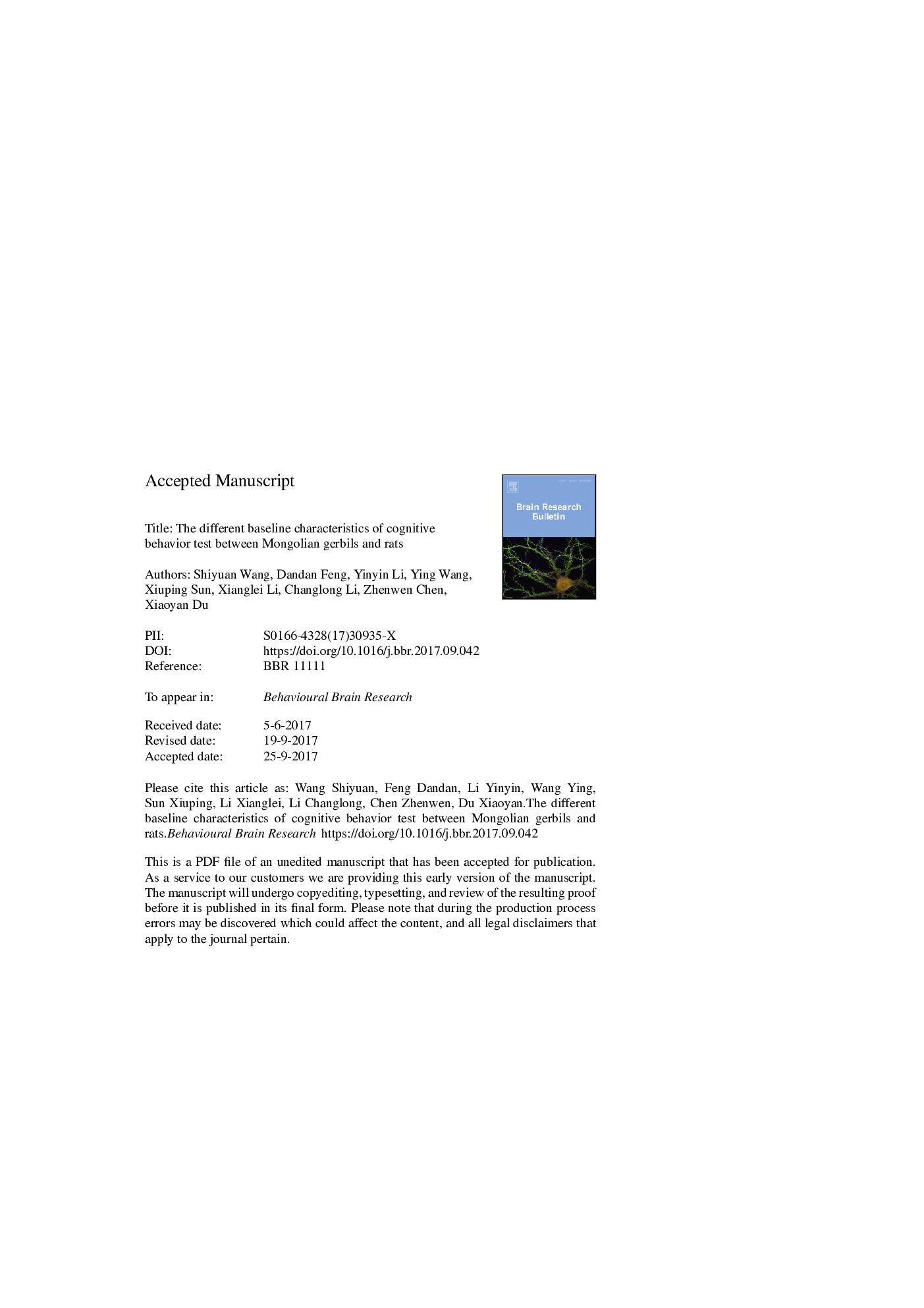| Article ID | Journal | Published Year | Pages | File Type |
|---|---|---|---|---|
| 8837648 | Behavioural Brain Research | 2018 | 26 Pages |
Abstract
The Mongolian gerbil is a popular laboratory animal useful across many research fields. In the area of cognitive behavioral research the gerbil have been shown exhibit an anxiety-like profile on the elevated plus-maze, and they could be useful as an animal model for testing anxiolytics and antidepressants. However, there are few reports that thoroughly describe the behavioral characteristics of the gerbils in common cognitive behavior tests. In the present study, we used 7 behavior tests to detect the baseline characteristics of the gerbils and compare them to the Sprague Dawley rats. Collectively, the gerbils showed significantly different behavior characteristics in the open field test, elevated plus maze, grip strength, social interaction and fear conditioning compared to the rats. However, no difference was found between gerbils and rats in sucrose preference or Barnes maze test. The data showed that the Mongolian gerbil exhibited higher social interaction and exploratory activity, but lower conditioning fear and grip strength compared with the rats. These results indicate that the gerbil may be a sensitive animal model in behavioral brain research particularly in the areas of anxiety and fear.
Keywords
Related Topics
Life Sciences
Neuroscience
Behavioral Neuroscience
Authors
Shiyuan Wang, Dandan Feng, Yinyin Li, Ying Wang, Xiuping Sun, Xianglei Li, Changlong Li, Zhenwen Chen, Xiaoyan Du,
